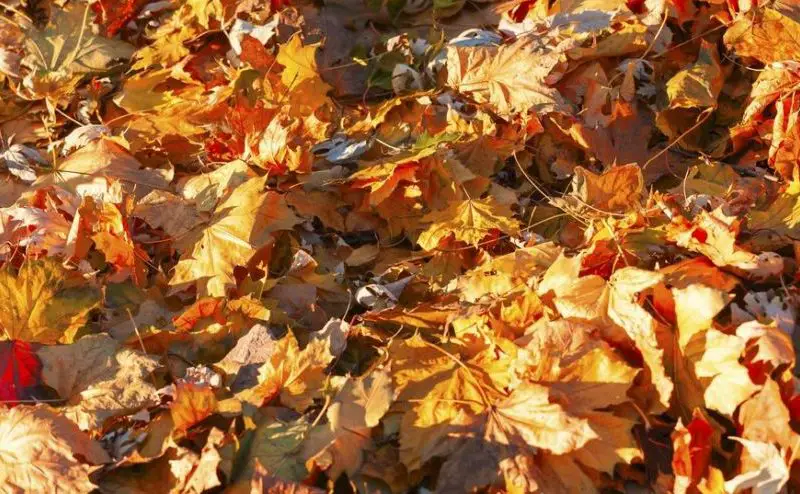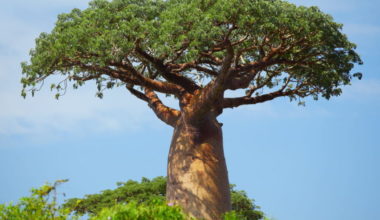When the trees lose their beautiful fall coat and the ground is covered with colorful dead leaves, the question is “What should I do with all these dead leaves? Should I leave them on the ground or remove them? “
Wet leaves that you leave on a deck or paved surface are dangerous because they form a very slippery mat. For this reason, it is advisable to remove them from all your walkways.
To prevent them from rotting, also remove the dead leaves from tender shoots, grass, evergreens and lawns. Lack of light causes unsightly brown spots on the lawn.
Contents
How do I collect fallen leaves?
If you only have a few leaves scattered on the lawn, you can just run the mower. Either you use the mulching function and, shredded, mixed with the grass and left on the spot, they will feed the soil, or you collect them with the collection bin and add them to the compost heap. This can be done when the first leaves start to fall in early fall.
If you have a lot of dead leaves on the ground and want to use them as mulch, for potting soil or to feed your compost, you need to collect them and transport them to the place of use or storage.
Tip: To avoid having to repeat the process several times, wait as long as possible until the majority of the leaves are on the ground.
Leaf Rake
To collect fallen leaves in a pile, you can use the leaf rake/grass brush with many long, flexible tines that are curved at the end, which is handy for leaves scattered over a small lawn.
Unroll a tarp on the ground and form your leaf pile on top. Just move the tarp to the place of use or storage.
Blower
For large areas or to “clean up” beds, a blower is more useful. There are blower-vacuum cleaners that store the vacuumed leaves in a bag: this avoids the chore of collecting them, but the capacity remains limited (about 40L). Many blower-vacuum cleaners also have a “shredder” function, which reduces the volume of vacuumed leaves, but the price is higher.
Sweeper
A little more expensive but more environmentally friendly, the push broom also collects and transports leaves. It is a large wheeled collection box with a rotating broom that is pushed in front of you to collect leaves (or grass clippings).
For larger lawn areas and a larger budget, there is a version that can be attached to a riding mower. It’s up to you to decide if the investment is worth it. But whatever the size of the bin, if you have a lot of leaves to collect, you will have to empty it often.
When to prune?
The appropriate time for pruning varies according to the type of plant and its blooming period.
Generally speaking, pruning is done at the end of winter to prepare the shrubs for the coming of spring.
Early summer pruning is dedicated to spring flowering shrubs. A pruning at the end of winter would not be harmful to them, but it would be a pity to deprive you of an abundant bloom, and generally very awaited for the charm and the perfume which it gives to the garden.
A light pruning can be done in autumn. The only purpose of this is to maintain a clean appearance of your shrubs.
Beyond these principles, each month of the year corresponds to a pruning period for shrubs, so depending on what your garden contains, you will find here when to prune your own shrubs:
- January: white hornbeam, desmodium, country hedge, Virginia jasmine, apple tree, knotweed.
- February: althea, wig tree, ceanothea, white hornbeam, cotoneaster, desmodium, broom, fruit currant, country hedge, Virginia jasmine, apple tree, knotweed, snowberry.
- March : althea, butterfly tree, snowball viburnum, camellia, caryopteris, white hornbeam, honeysuckle, chimonanthe, summer clematis, desmodium, fuchsia, broom, wisteria, hydrangea, Virginia jasmine, oleander, tin laurel, peony tree, potentilla, knotweed, rosebushes, summer spirea.
- April : forsythia, flowering gooseberry, witch hazel, thuja.
- May : boxwood, spring clematis, Japanese quince, lilac, prunus, spring spirea, spring tamarisk, privet.
- June : Judas tree, azalea, winter heather, spring clematis, Japanese quince, exochorda, rhododendron, viburnum, weigelia.
- July: deutzia, ornamental bramble, seringat.
- August : boxwood, thuja.
- September: boxwood, hydrangea, palm laurel, privet.
- October : no pruning.
- November : aucuba, white hornbeam, desmodium, fuchshia, country hedge, Virginia jasmine, apple tree, knotweed, summer tamarisk.
- December: white hornbeam, desmodium, country hedge, Virginia jasmine, apple tree, knotweed.
How to prune shrubs?
Pruning deciduous shrubs:
Whether it is a late winter or early summer pruning:
- Clear your plants of dead or diseased branches
- Cut off all rough or unsightly looking branches
- Remove all wilted flowers. There is no need to waste the energy of the shrub in producing stillborn fruits.
- Finally, give them better ventilation and more light by clearing the base of the oldest branches.
Also perform a rejuvenation pruning in leap years (to benefit from a landmark) by severely cutting back the branches.
Pruning of evergreen shrubs
Pruning at the end of winter is intended to “wake up” the plant in a way, after the harsh weather. It will also allow you to prepare your shrubs for the summer season, by giving them a nice neat shape. It is a rather severe pruning that consists mainly in cutting off any dead, diseased or frost-burned branch.
Early summer pruning revives and refreshes the plant after flowering, and increases branching. It also allows to rebalance the shape of the shrub whose branches had to grow quickly in spring. It consists of removing all the damaged branches, shortening all those whose length exceeds the general shape, in order to obtain a harmonious general aspect.
Fall pruning is not mandatory, since its interest is purely aesthetic. It is simply a matter of rebalancing the look of the shrub by a very light pruning, taking care not to weaken the plant before winter.
Should I systematically pick up dead leaves?
The dead leaves that litter the beds do not necessarily have to be picked up. However, it is important to remove those that cover the lawn and evergreens because they form a thick layer that deprives them of light and oxygen. Therefore, it is important to collect dead leaves quickly and regularly from the lawn and evergreen beds.
Also remember to remove fallen leaves from decks and walkways to avoid slipping. Also, some dead leaves are carriers of diseases, so it is essential to get rid of them. On the other hand, some dead leaves can be beneficial to the garden. They can indeed be used in different ways: to mulch the feet of plants, to cover bare soil, in the compost…
What to do with dead leaves ?
Feed the compost
Just like uneaten leaves from the vegetable garden or lawn clippings, dead leaves are welcome in the compost pile. However, there are a few caveats to composting fallen leaves:
A good compost must have a good carbon/nitrogen balance. However, dead leaves are materials rich in carbon and poor in nitrogen. As they arrive in large numbers, it is possible that the compost heap, or composter, will not be able to accommodate them all.
Hard leaves from cherry laurels, photinias, or other heathens (Eleagnus) take longer to break down. If you collect them separately from other leaves you can either build a second compost pile dedicated to “hard” organic waste (you will use it after two years), or accelerate their decomposition by shredding them with the lawnmower.
Making leaf compost
Leaf litter is a soft, light substrate that retains moisture and provides mineral elements that can be used directly by plants. It is obtained by composting dead leaves.
When half mature (after one year of composting), the leaf compost is rather acidic and can be used as mulch at the foot of ornamental shrubs, in perennial beds or in the strawberry field. After 2 to 3 years of maturation, it becomes a very good growing medium for seedlings, transplants, cuttings, or even as a substrate for potted plants, mixed with garden soil.
Mulch your plantations
Dead leaves are the easiest material to use for mulching. Already scattered in the garden, all you have to do is bring them back to the foot of your plants or in a thick layer on the vegetable garden beds; they will have all winter to degrade and make humus, while preventing the proliferation of weeds. A few branches or bamboo canes placed on top will prevent them from scattering at the first gust of wind.
For a finer mulch, place it at the base of smaller plants by gathering the leaves in a pile and mowing them down.
The toughest leaves, which decompose slowly, can be used on the open beds of the vegetable garden or at the foot of perennials and crops that stay in place for a long time: strawberry plants, squash…









